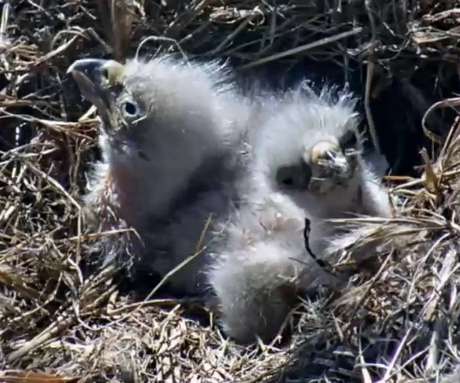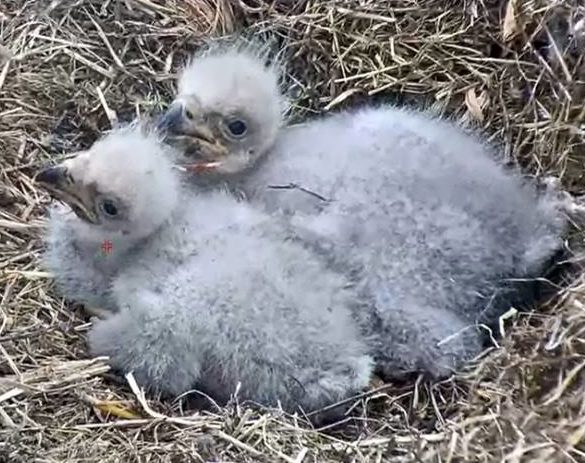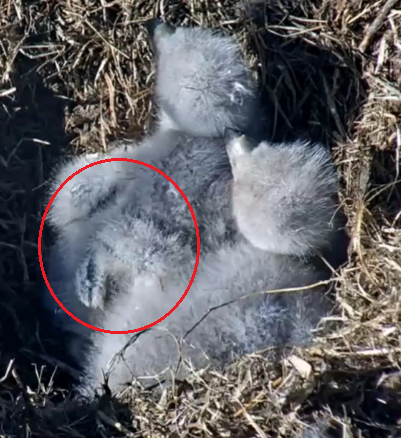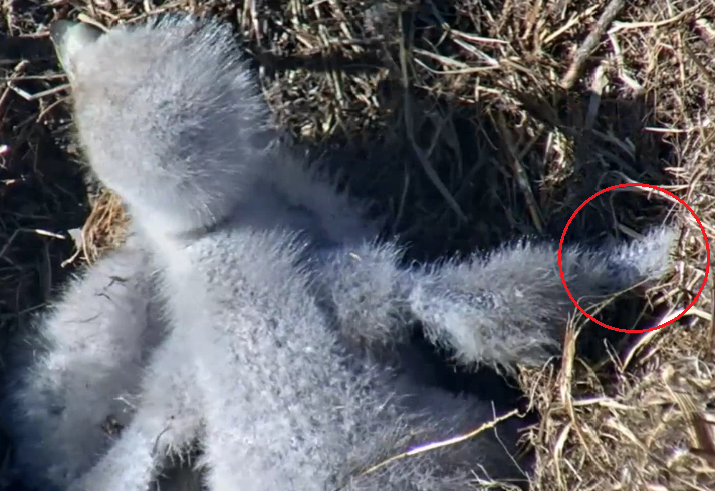AT WILD BALD EAGLE NESTS,
2006-2020
© elfruler 2020
The table presented on this page gives numbers of eggs, nestlings, and fledglings observed at wild Bald Eagle nests on streaming video cams or by credible ground observers from 2006-2020. (Click here for a list of nests providing data.)
Table 1 gives precise counts of eggs laid, chicks hatched, and eaglets fledged over the 15 breeding seasons, broken down by year and by clutch size (1-egg, 2-egg, 3-egg, 4-egg, 5-egg), with totals and percentages.
TABLE 1
Click on the Pop-Out button to open in a new tab.
 Loading...
Loading...
Here are some highlights:
-
- The data incorporate numbers from a total of 388 nesting seasons, resulting in 401 clutches of eggs including 12 second clutches after loss of the first clutch (see Notes at the bottom of the table).
- Of the total clutches for the 15-year time frame,
- A total of 910 eggs were laid.
- The average number of eggs laid per clutch was 2.3.
- 721 of the eggs hatched, or 79.2% of the eggs laid.
- Of the clutches in which at least one egg hatched,
- A total of 588 eaglets were confirmed to have fledged, either directly from the nest (571), or after rehab and release (17). This is 81.6% of nestlings hatched, or 64.7% of eggs laid.
In a handful of cases it is unknown whether a particular eaglet fledged, sometimes when the cam went down, or the cam angle made it impossible to follow an eaglet’s movements, or an eaglet had a misstep and fledged before it seemed ready and ground searches could not confirm it was safe.
Numbers can fluctuate up and down from one year to the next, and there is no clear trend in either direction. For example:
-
- 14.6% of the clutches in 2018 had 1 egg, none in 2019, and only 7% in 2020. The numbers of 3-egg nests jumped from 28.6% in 2013 to 41.4% in 2014, then dropped to 21.4% in 2015.
- The total number of eggs hatched ranges from 66.7% in 2006 to 96.3% in 2012.
- Sheer numbers can be deceptive. In 2020 a whopping 29 eggs were lost, but that is 70.7% of the total number of eggs laid that year, slightly below the average of 79.2% for all eggs hatched.
- Confirmed fledges (directly from the nest and rescue/rehab) varies between 69.2% in 2012 and 93.5% the year before, 2011.
The fluctuations in the numbers actually reflect what observers have seen happen on the nests. Many factors affect the success of a given nest in a given year. These include weather, change of nest, change of mate, food availability, intruders and predators, and unusual events such poisoning and accidents. The variations also could be reflective of the relatively small sampling of nests.









































































































You must be logged in to post a comment.